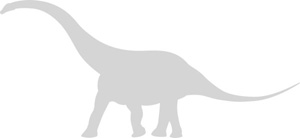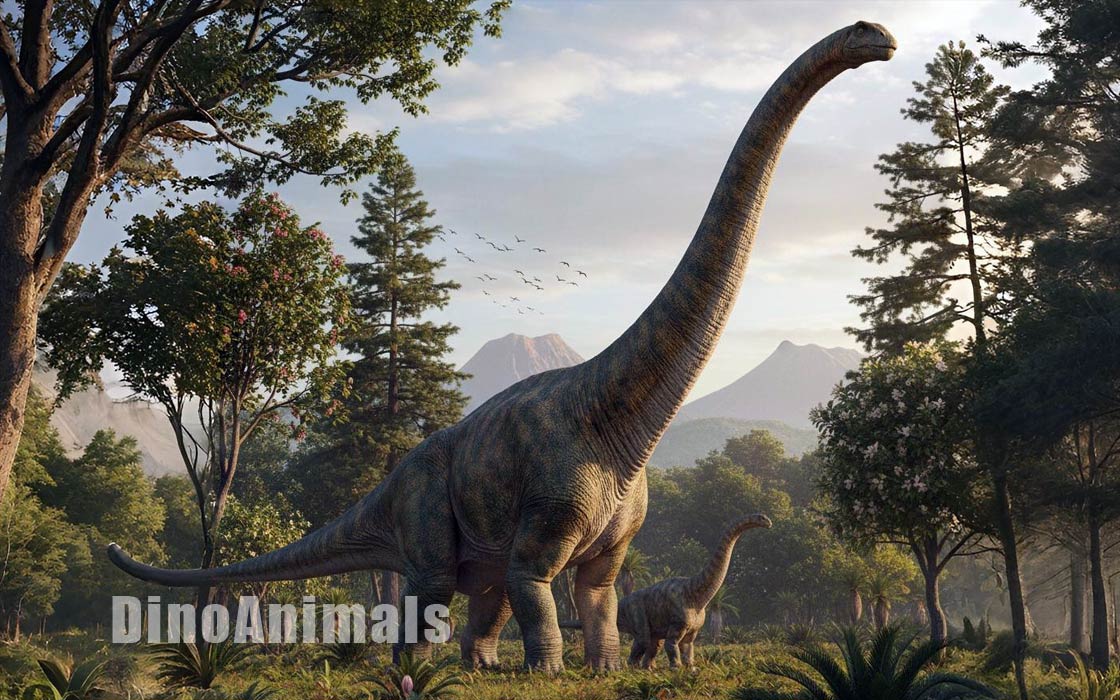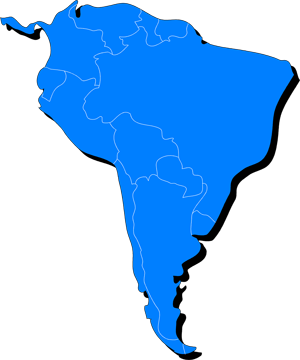Every month, 100,000 readers use the Dinosaur Database, but we receive no support from you. Developing and updating the database requires a lot of work. If you want it to remain open and be updated, please support us via the "Buy us a coffee" button available on every page or via the Support page.
Dinosaur: Patagotitan mayorum

| Length*: | 30 m | 98.4 ft |
| Weight*: | 57 t | 125,663 lb |
*The largest known specimen
Period
Epoch: Early Cretaceous
Stage: Late Albian
Years: 113–100.5 Ma
Details
Status: valid
Author: Carballido et al.
Year: 2017
Distribution
Area: South America
Country: Argentina
Region: Chubut
Formation: Cerro Barcino
Description
Patagotitan mayorum
Patagotitan mayorum is one of the largest sauropod dinosaurs ever discovered, hailing from the Late Cretaceous period (Late Albian), around 113–100.5 million years ago. It belongs to the Titanosauria, a diverse group of long-necked, plant-eating dinosaurs. The remains of this enormous creature were uncovered in Patagonia, Argentina, in the Cerro Barcino Formation. Named in honor of the Mayo family, who own the land where the fossils were found, Patagotitan means “Titan of Patagonia,” a fitting name for one of the heaviest land animals ever to exist.
Physical Characteristics
Patagotitan mayorum was an exceptionally large titanosaur, characterized by its massive size and elongated body. Estimates suggest it measured around 31 meters (101.7 feet) in length and weighed approximately 50–57 metric tons. Its colossal size surpasses even that of most other giant sauropods, making it one of the largest terrestrial animals known from the fossil record. The neck was particularly elongated, measuring roughly 12 meters (39 feet), and it was composed of at least 15 vertebrae, allowing it to reach high into the forest canopy to feed on vegetation.
The vertebrae of Patagotitan were pneumatized, featuring large air sacs that reduced the overall weight of the bones while maintaining structural strength, a characteristic feature of many sauropods. Its limbs were robust and column-like, adapted to support its massive weight. The femur (thigh bone) of Patagotitan measured about 2.4 meters (7.9 feet) long, indicating the tremendous size of the animal. The tail, long and flexible, likely helped with balance and may have been used for communication or defense.
Diet and Feeding Habits
As a herbivore, Patagotitan mayorum primarily consumed large quantities of plant material to sustain its massive size. Its diet likely consisted of conifers, ferns, cycads, and other vegetation that was abundant in its environment. The long neck of Patagotitan enabled it to reach both high and low vegetation, providing a broad range of feeding opportunities. The peg-like teeth were designed for stripping leaves off branches, which were then swallowed whole and processed in its large, multi-chambered stomach.
Given its size, Patagotitan would have needed to consume a significant amount of food daily. Its large body size allowed it to process large volumes of low-nutrient plant material efficiently. Its feeding habits likely included moving through different parts of its habitat to follow the growth of seasonal vegetation.
Habitat and Distribution
Patagotitan mayorum lived in what is now the Patagonia region of Argentina, which, during the Late Cretaceous, was a warm and humid environment with vast floodplains, rivers, and forests. The presence of freshwater resources and extensive vegetation made this area ideal for large herbivorous dinosaurs. The geological evidence from the Cerro Barcino Formation, where the fossils were discovered, indicates that Patagotitan lived in a diverse ecosystem with a mix of other sauropods, theropods, and smaller herbivorous dinosaurs, as well as various plant and animal life.
The sediments in the formation suggest that the region experienced periodic flooding, which could have influenced the distribution and behavior of large dinosaurs like Patagotitan. The environment provided ample resources, such as food and water, which were crucial for sustaining the massive size of these dinosaurs.
Behavior and Social Structure
Although direct evidence of the behavior of Patagotitan mayorum is limited, its size suggests that adults were largely free from predation threats, allowing for potentially solitary or small-group lifestyles. Juveniles may have been more vulnerable to predators and could have formed herds for protection until they grew larger. Like other sauropods, Patagotitan may have exhibited migratory behavior to find sufficient food sources, particularly during periods of drought or seasonal changes in vegetation availability.
Fossil evidence does not provide definitive clues about social behaviors such as nesting or parental care, but the presence of multiple individuals in close proximity suggests that these dinosaurs may have lived in loose groups or herds at certain times, especially when resources were abundant. The large size of these animals likely required coordination to avoid competition for food resources.
Discovery and Research
Patagotitan mayorum was first discovered in 2012 by a team led by Dr. José Luis Carballido and Diego Pol from the Museo Paleontológico Egidio Feruglio in Argentina. The excavation site yielded one of the most complete sets of titanosaur remains ever found, with multiple individuals represented, providing valuable insights into the anatomy, growth patterns, and possible behavior of these giant dinosaurs. The remains include numerous vertebrae, limb bones, and a nearly complete pelvis.
The remarkable state of preservation of the Patagotitan fossils allowed for detailed studies of its bones, leading to a better understanding of the biomechanics and physiology of giant sauropods. Initial studies were published in 2017, highlighting the massive size of Patagotitan and suggesting that it represents one of the largest dinosaurs ever to walk the Earth. Research on the bones’ histology has provided insights into the growth rates of this dinosaur, suggesting rapid growth during its juvenile phase.
Significance and Interesting Facts
Patagotitan mayorum holds significance not only because of its size but also due to the completeness and quality of its fossils. Its discovery has provided a rare opportunity to study the anatomy and life history of a giant sauropod. The skeletons of multiple individuals suggest the possibility of age-related changes in morphology, which could help paleontologists understand how these massive animals grew and aged.
An interesting fact about Patagotitan is that its size was so extraordinary that researchers had to conduct studies to reassess its weight, considering the effects of its air-filled bones and overall body structure. Ongoing research focuses on understanding the physiological adaptations that allowed Patagotitan to achieve such a massive size, and how it interacted with its environment and other species within its ecosystem.
Locations
Sources
Material: At least six partial skeletons (many types of bones).
References: Carballido, J.L.; Pol, D.; Otero, A.; Cerda, I.A.; Salgado, L.; Garrido, A.C.; Ramezani, J.; Cúneo, N.R.; Krause, J.M. (2017). "A new giant titanosaur sheds light on body mass evolution among sauropod dinosaurs".




